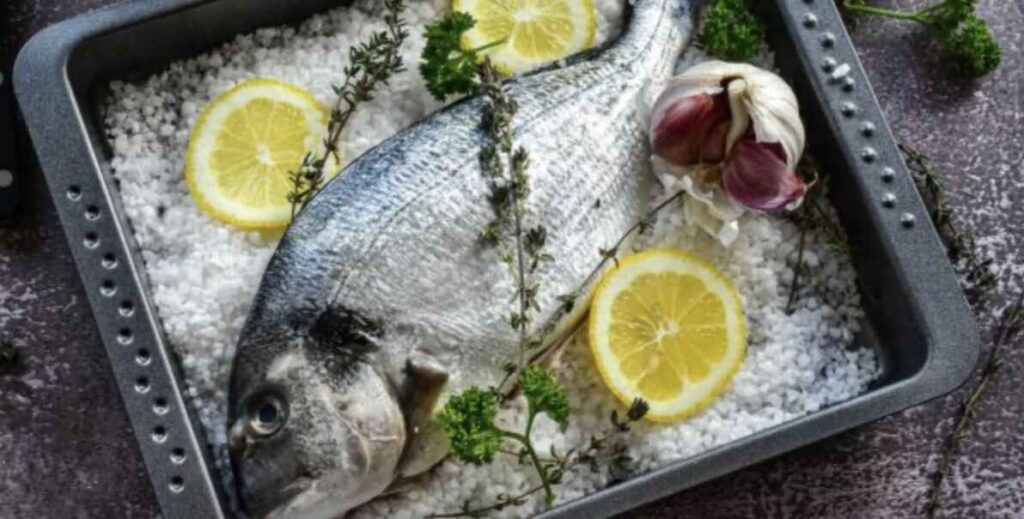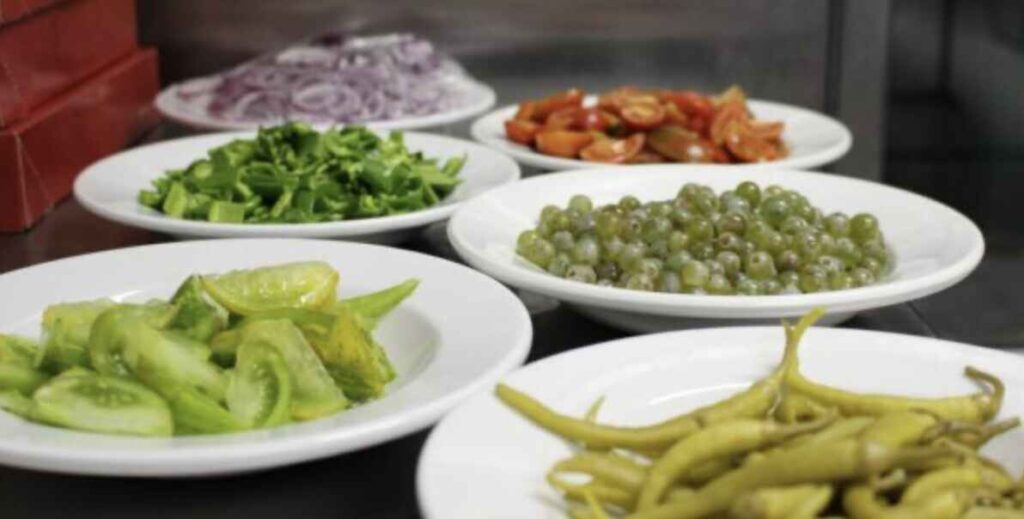Why Cooking Fish Is an Essential Culinary Skill
Cooking fish goes beyond preparing meals—it’s a blend of art and science with numerous health benefits. It also connects us to global culinary traditions, making it a skill worth mastering.
Table of contents
Health Benefits of Including Fish in Your Diet
Fish is celebrated for its impressive nutritional profile. It’s packed with protein, omega-3 fatty acids, and essential vitamins like B12 and D, along with minerals such as iodine and selenium. These nutrients are vital for brain health, a strong immune system, and maintaining overall well-being.
Eating fish regularly may help reduce the risk of chronic conditions like heart disease, arthritis, and depression. Omega-3 fatty acids, in particular, are known for their anti-inflammatory properties and support for cognitive function.
To fully benefit from its nutritional value, it’s crucial to use proper preparation techniques. Methods like steaming, baking, or grilling help retain nutrients and enhance flavor, creating meals that are both healthy and enjoyable.
Popularity of Fish in Global Cuisines

Fish holds a prominent place in culinary traditions across the world. From the sashimi and sushi of Japan to the bouillabaisse of France and the ceviche of Peru, fish is at the heart of iconic dishes that define cultural identities. The diversity of fish species and preparation methods enables endless creativity in the kitchen, making it a highly versatile ingredient.
In regions like the Mediterranean, where fish consumption is integral to the diet, the emphasis on fresh ingredients and simple preparation highlights the natural flavors of fish. Similarly, in coastal areas of India, spiced curries and fried fish reflect the profound connection between local communities and the sea.
Learning to cook fish opens the door to exploring these global cuisines and their rich culinary heritages. It allows cooks to experiment with techniques like poaching, broiling, or smoking, and adapt recipes to their local ingredients, creating unique dishes that celebrate their culinary exploration.
Mastering the art of cooking fish is not only about crafting delightful meals but also about embracing a skill that enriches your health and connects you to the world’s diverse gastronomic traditions. By doing so, you elevate your culinary expertise while fostering a deeper appreciation for one of nature’s most nourishing gifts.
Selecting the Freshest Fish

When it comes to cooking fish, freshness is paramount. The flavor, texture, and safety of your dish all depend on starting with the best possible product. Here’s how to select the freshest fish and where to find it:
1. How to Identify Fresh Fish
To ensure you’re choosing the freshest fish, pay attention to these key indicators:
- Appearance: Fresh fish should have shiny, metallic skin with no discoloration. For whole fish, the eyes should be bright, clear, and slightly bulging—not sunken or cloudy. The gills should be vibrant red or pink and free of slime.
- Smell: A fresh fish has a mild, briny scent reminiscent of the ocean. A strong, unpleasant, or “fishy” odor indicates that the fish is no longer fresh.
- Texture: The flesh should be firm and spring back when touched. Avoid fish with flesh that feels mushy or leaves an indentation.
- For Fillets: Look for fillets with a moist, translucent appearance and avoid those that are dried out, dull, or browning at the edges.
By learning to spot these signs, you’ll always be confident in the quality of your selection.
2. Best Places to Buy Quality Fish
Finding the right source is equally crucial for getting the freshest fish. Consider these options:
- Fish Markets: Local fish markets often offer the freshest catch, especially in coastal regions. Build a relationship with a trusted fishmonger who can guide you on seasonal availability and freshness.
- Supermarkets: Some supermarkets have excellent seafood sections with clear labeling about sourcing and freshness. Look for stores that prioritize sustainable practices and provide information about the catch date.
- Online Vendors: Many reputable online fish vendors deliver high-quality, sustainably sourced seafood directly to your door. Look for companies that use fast, cold shipping to ensure freshness.
- Farmer’s Markets: If available, farmer’s markets often feature local fish vendors who sell fresh, regional catches.
Knowing where to shop and how to inspect fish ensures you always have the best ingredients for your culinary creations.
Essential Tools for Cooking Fish
Cooking fish requires precision and care, and having the right tools can make all the difference. Here’s a guide to must-have tools and optional gadgets for achieving perfect results:
1. Must-Have Kitchen Tools
- Sharp Knife: A high-quality filleting knife is essential for cleaning, deboning, and slicing fish. The blade should be thin and flexible to handle delicate cuts with precision.
- Fish Spatula: This specialized spatula is thin, wide, and slotted, making it perfect for flipping fillets without breaking them.
- Non-Stick or Cast-Iron Pan: A reliable non-stick or seasoned cast-iron skillet ensures even cooking and prevents sticking, essential for delicate fish.
- Tongs: Lightweight tongs provide control when handling fish, particularly when grilling or frying.
- Cutting Board: A dedicated cutting board for fish helps maintain hygiene and provides a stable surface for preparation.
- Thermometer: An instant-read thermometer ensures your fish is cooked to the correct temperature, eliminating guesswork.
Preparing Fish for Cooking

Proper preparation is key to enhancing the flavor and texture of fish. Mastering the basics of cleaning, scaling, and filleting ensures you’re ready to tackle any recipe.
1. Cleaning and Scaling
Before cooking fish, thorough cleaning and scaling are crucial:
- Cleaning:
- Rinse the fish under cold running water to remove any dirt or debris.
- If it is whole, use a sharp knife to make a shallow cut along the belly from the tail to the head.
- Remove the innards carefully and discard them. Rinse the cavity thoroughly.
- Pat it dry with paper towels to prepare it for scaling or cooking.
- Scaling:
- Hold the fish firmly by the tail.
- Using a scaler or the back of a knife, scrape from the tail to the head in short, swift strokes to remove the scales.
- Rinse it again to wash away any loose scales.
2. Filleting Techniques for Beginners
Filleting fish can be intimidating, but a few simple steps make the process manageable:
- Position the Fish: Lay it flat on a cutting board. Make sure it’s stable by placing a damp cloth under the board.
- First Cut: Starting behind the gill, make a diagonal cut toward the head, stopping at the backbone.
- Cut Along the Backbone: Turn your knife horizontally and run it along the backbone toward the tail, separating the flesh from the bones.
- Repeat on the Other Side: Flip it over and repeat the process for the second fillet.
- Trim and Debone: Trim any excess skin or fat and use fish tweezers to remove pin bones.
Popular Cooking Methods for Fish
This food is a versatile ingredient that shines in a variety of cooking methods. Here’s a guide to the most popular techniques:
1. Grilling
Grilling is ideal for firm, meaty fish like salmon, tuna, or swordfish. It adds a smoky flavor and beautiful char marks.
- Tips:
- Preheat the grill and oil the grates to prevent sticking.
- Brush it with oil and season it before placing it on the grill.
- Cook over medium heat, flipping once, until the flesh is opaque and flakes easily.
2. Baking
Baking is a gentle, hands-off method that works well for delicate fish like cod, halibut, or sole.
- Tips:
- Preheat the oven to 375–400°F (190–200°C).
- Season the fish and place it in a baking dish. Add vegetables, herbs, or citrus slices for flavor.
- Cover with foil for moist results or leave uncovered for a crispier finish.
- Bake until it is opaque and reaches an internal temperature of 145°F (63°C).
3. Steaming
Steaming preserves the natural flavors and nutrients of fish, making it a healthy cooking method.
- Tips:
- Use a steaming basket or bamboo steamer placed over boiling water.
- Season it lightly and optionally add aromatics like ginger, garlic, or lemongrass.
- Steam for 6–10 minutes, depending on the thickness of the fillet, until the it is tender and flakes easily.
4. Pan-Frying
Pan-frying is perfect for achieving a crispy exterior while keeping the inside moist. It’s great for fillets like trout, snapper, or tilapia.
- Tips:
- Use a non-stick or cast-iron skillet and heat oil or butter over medium-high heat.
- Pat the fish dry to avoid excess moisture and season it well.
- Place it skin-side down first, cooking for 3–4 minutes per side, depending on thickness.
Optional Gadgets for Perfect Results
- Fish Scaler: A fish scaler simplifies the process of removing scales, especially if you work with whole fish regularly.
- Steaming Basket: For gentle cooking methods, a steaming basket helps retain moisture and flavor.
- Grill Basket: Ideal for grilling, a fish basket holds it securely and prevents it from sticking or falling apart.
- Sous Vide Machine: For perfectly cooked, tender fish, sous vide cooking offers precision and consistent results.
- Fish Tweezers: These make it easy to remove tiny pin bones from fillets, ensuring a smooth dining experience.
Mastering Seasoning and Marinades for Fish
Seasoning and marinades elevate the natural flavors of fish, making it a versatile protein that fits a variety of dishes and cuisines. Understanding how to pair spices, herbs, and marinades is essential for any aspiring cook.
1. Basic Spices and Herbs
When seasoning fish, simplicity often yields the best results. Here are some common spices and herbs to enhance your dishes:
- Spices:
- Salt and Pepper: The cornerstone of fish seasoning, bringing out the natural flavors.
- Paprika: Adds a mild sweetness and vibrant color, great for grilled or pan-fried fish.
- Cumin: A subtle earthy flavor perfect for spicy or Middle Eastern recipes.
- Chili Powder: For a touch of heat in tacos or Latin-inspired dishes.
- Herbs:
- Dill: A classic pairing with salmon, bringing a fresh, slightly tangy flavor.
- Parsley: Versatile and mild, often used as a garnish or in Mediterranean dishes.
- Thyme: Complements baked or roasted fish with its earthy notes.
- Cilantro: Adds a bright, citrusy flavor, ideal for Asian or Latin recipes.
Experimenting with these spices and herbs helps you create balanced and flavorful dishes that highlight the natural taste of fish.
2. Preparing Flavorful Marinades
Marinades infuse fish with additional flavor while keeping it moist and tender. Here’s how to create effective marinades:
- Basic Components:
- Acid: Lemon juice, lime juice, or vinegar adds brightness and helps tenderize.
- Oil: Olive oil or sesame oil enhances richness and prevents drying during cooking.
- Seasoning: Salt, pepper, garlic, and spices build depth of flavor.
- Popular Marinade Ideas:
- Citrus Garlic Marinade: Combine lemon juice, olive oil, minced garlic, and parsley for a fresh, Mediterranean touch.
- Soy Ginger Marinade: Mix soy sauce, grated ginger, sesame oil, and a splash of honey for an Asian-inspired twist.
- Spicy Cajun Marinade: Blend olive oil with Cajun seasoning, smoked paprika, and a pinch of cayenne for bold flavor.
Marinate fish for 15–30 minutes, as longer times can overwhelm delicate flavors or break down the texture.
Delicious Fish Recipes for Every Occasion
Fish is a versatile ingredient that adapts to both quick weekday meals and impressive dinner party fare. Here are ideas to inspire your cooking:
1. Quick Weeknight Dishes
Fast, easy, and satisfying, these recipes are perfect for busy evenings:
- Lemon Garlic Butter Salmon: Pan-sear salmon fillets with a simple lemon, garlic, and butter sauce, and serve with steamed broccoli or rice.
- Fish Tacos: Use pan-fried white fish like tilapia or cod, topped with shredded cabbage, salsa, and a lime crema in warm tortillas.
- Teriyaki Glazed Cod: Coat cod fillets with store-bought or homemade teriyaki sauce and bake until flaky and caramelized.
- Herb-Crusted Tilapia: Sprinkle breadcrumbs mixed with dried herbs over tilapia fillets and bake for a crispy, flavorful crust.
2. Show-Stopping Dinner Party Recipes
For special occasions, these recipes deliver elegance and flavor:
- Whole Roasted Sea Bass: Stuff a whole sea bass with lemon slices, thyme, and garlic, then roast until golden and tender.
- Lobster and Seafood Paella: Combine fish, shrimp, and lobster with saffron-infused rice for a Spanish-inspired centerpiece dish.
- Salmon en Croûte: Wrap salmon and a spinach-cream cheese mixture in puff pastry, then bake for a dramatic, flaky presentation.
- Grilled Swordfish with Mango Salsa: Grill swordfish steaks and serve with a refreshing mango and jalapeño salsa for a tropical touch.
Pairing Fish with Sides and Sauces

The right sides and sauces can transform a simple fish dish into a complete, satisfying meal. By complementing the flavors and textures of the fish, you enhance the dining experience.
1. Complementary Side Dishes
Choosing sides that pair well with fish depends on the type of fish and the cooking method. Here are some classic options:
- Grilled Fish: Pair with light, fresh sides like:
- Grilled vegetables (zucchini, asparagus, or bell peppers)
- Quinoa or couscous salad with herbs and lemon
- Mixed green salad with vinaigrette
- Baked Fish: Complement with hearty yet mild sides like:
- Roasted potatoes or sweet potatoes
- Steamed rice or pilaf
- Sautéed spinach or green beans
- Fried or Pan-Fried Fish: Balance with crispy or tangy sides:
- Coleslaw or a citrusy slaw
- Cornbread or fries
- Pickled vegetables for a refreshing contrast
Matching the sides to the fish’s preparation helps create a harmonious meal.
2. Best Sauces for Different Fish Types
Sauces bring additional flavor dimensions to fish, and some are better suited for particular types:
- Mild White Fish (Cod, Tilapia):
- Lemon Butter Sauce: A classic pairing that adds brightness and richness.
- Caper Sauce: Salty and tangy, perfect for a Mediterranean twist.
- Salmon:
- Dill Cream Sauce: Creamy with fresh herbaceous notes.
- Teriyaki Glaze: Sweet and savory, ideal for Asian-inspired dishes.
- Tuna or Swordfish:
- Chimichurri: A zesty herb sauce that cuts through the meaty texture.
- Mango Salsa: Sweet and spicy, adding tropical flair.
- Fried Fish:
- Tartar Sauce: A creamy classic with pickles and dill.
- Spicy Aioli: A mayonnaise-based sauce with a kick of garlic and chili.
Experimenting with sauces tailored to the fish type creates balanced and flavorful combinations.
Addressing Common Cooking Challenges
Cooking fish can be intimidating due to its delicate nature, but with the right techniques, you can overcome common pitfalls.
1. Avoiding Overcooking
Overcooking is a common mistake that leaves fish dry and unappetizing. Here’s how to prevent it:
- Use a Thermometer: Cook fish until it reaches an internal temperature of 145°F (63°C).
- Watch for Visual Cues: Fish is done when it turns opaque and flakes easily with a fork.
- Cook Gently: Use lower heat or methods like steaming and baking to prevent overcooking.
Timing is crucial. For most fillets, cooking for 3–5 minutes per side (depending on thickness) is sufficient.
2. Reducing Fishy Smells in Your Kitchen
The lingering odor of cooked fish can be off-putting. These tips help minimize it:
- Cook in a Well-Ventilated Area: Use a range hood or open windows to improve airflow.
- Neutralize Odors: Simmer a mixture of water, lemon slices, and cloves on the stove after cooking.
- Use Fresh Fish: Fresher fish has a milder scent, reducing strong smells during cooking.
- Clean Promptly: Wash pans, utensils, and surfaces immediately after use to remove residues that contribute to odors.
Frequently Asked Questions About Cooking Fish
Cooking fish often comes with questions, especially for beginners. Here are six common FAQs answered concisely:
1. How Do I Know When Fish Is Done?
It’s done when opaque and flaky. Use a thermometer to check for 145°F (63°C).
2. Should I Leave the Skin On or Remove It?
Skin helps hold fish together and crisps when cooked. Remove it after cooking if desired.
3. Can I Cook Frozen Fish Without Thawing?
Yes, but cook 50% longer. Rinse off ice and pat dry before cooking.
4. What Is the Best Oil for Cooking Fish?
Use neutral oils like canola or grape seed. Olive oil works for low-heat cooking.
5. How Do I Prevent Fish from Sticking to the Pan?
Preheat the pan, use enough oil, and pat the fish dry before cooking.
6. How Long Should I Marinate Fish?
Marinate for 15–30 minutes max to avoid mushy texture.
Conclusion
Recap of Key Techniques
Cooking fish requires selecting fresh ingredients, using proper tools, mastering preparation, and exploring diverse cooking methods to enhance flavor and texture.
Encouragement to Experiment
Don’t hesitate to try new recipes, techniques, and flavor combinations. Experimenting helps build confidence and unlocks the full potential of fish in your cooking.

